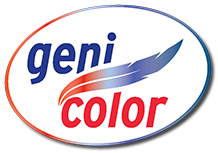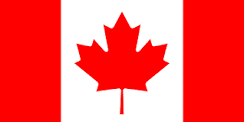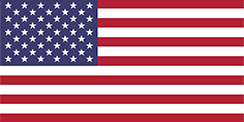- Home
- Car Touch-Up paint
- Touch up paint Home Door & Window
- Product information
- FAQs
- About us
- Contact us
- Log in
Fast log in
Other options
- Home
- You are here:
-
Home

- FAQs
Frequently Asked Questions
1. What causes « fish eyes » on the paint?
Fish eyes are caused by the presence of contaminants such as wax, silicone or oil on the surface to be painted. That is why it is very important to thoroughly clean the surface with an appropriate solvent.
2. What causes the paint to chip?
The paint could chip for different reasons such as : 1) contamination caused by the presence of wax, silicone, oil, etc. 2) insufficient or inadequate sanding 3) the use of incompatible products or of poor quality.
3. Why is the clear coat flat or fumed?
The clear coat could be flat or fumed for different reasons such as: 1) insufficient layers or each layer being too thin, 2) weather being too hot and humid, 3) spraying paint too far from the surface.
4. Why sand?
Sanding allows to level the surface and gives a better adhesion to the paint.
6. Why is it important to respect the waiting time between coats?
The waiting time suggested on each product is the time required for the solvents to evaporate. It is therefore very important to read the instructions on the label.
7. What is the difference between an adhesion promoter primer and a primer surfacer?
An adhesion promoter primer is used to protect against rust and/or to promote adhesion when applying the primer surfacer or paint. It is applied on bare metal or certain plastic parts. It cannot be sanded. Primer surfacer must be sanded. It is used to fill sandpaper scratches and to obtain a perfect finishing before painting.
8. What is the difference between a "1-stage system"(Basecoat/Clear coat) and a "2-stage system"), «tri-coat»?
We have two paint systems. The basecoat/clear coat ("1-stage system"). The basecoat gives the color and the clear coat provides the gloss and a protection against UV rays and bad weather. For a tri-coat ("2-stage system"), add a second step to the 1-stage system, a middle coat must be applied. This layer will give more depth to the color. Pearl whites and metallic reds are often « tri-coat » colors.
9. How to determine which paint system should be used?
You will easily find the color code of your vehicle by using our search engine. This code will identify which paint system to use. The paint system will automatically be indicated when placing your order as well as the number of products needed for the repair.
10. Why and when should a compound be applied?
A compound paste will remove the top layer of the paint that has been worn out by either oxidation or bad weather. The original color comes back to life. If a repair is intended, the compound must be used before the touch up to obtain a perfect match. It is recommended to apply a good quality wax one month after the touch up.
11. Why and when should a wax be applied?
A good quality wax will protect the paint from bad conditions such as salt, calcium, dust, gravel and bad weather. It could be applied by itself or after a compound or even after a touch up. In that case, it is recommended to wait at least one month after the application of the paint. This will allow all solvents to evaporate before applying the wax.
12. How to locate the color code?
Every car manufacturer will place a sticker or a plate in a particular location of the vehicle. This sticker contains many information including the color code of your car. To easily find this sticker, please use our search engine. However, if this sticker should be damaged or has been removed, the car dealer can give you the color code with the serial number of your car.
13. What is a blending solvent?
It is a special blend of solvent and varnish designed to dissolve the overspray resulting from the application of touch-up paint and/or clear coat. One coat of blending solvent on the edges will remove any demarcation.
14. Why is the clear application required?
The application of clear coat is an essential part of a 2 stage or 3 stage paint system. It must not be omitted. The clearcoat provides the shine and protection to the paint. It also blends the touch up with the rest of the car. As a final step, we recommend the use of a blending solvent .
15. Why is it important to clean the surface to be repaired?
A proper cleaning will eliminate dirt and dust as well as other contaminants such as wax, tar, oil and grease. The adhesion of the different products that will be used can be compromised by a surface that is not thoroughly cleaned. Fish eyes is an example of the different problems that can occur due to contaminants. Before starting any touch ups, the vehicle should be washed with soap and hot water. Once dry, use a solvent/degreaser to remove any remaining contaminants.
16. What is the ideal temperature to do a repair?
The ideal temperature is between 70°F (21°C) and 75°F (24°C). If it is too cold, products will not dry well or, if it is too hot, products will dry too quickly. In each case, the repair will be compromised.
17. What should be used to mask?
It is recommended to use a good quality opaque paper. Newspaper should never be used. The solvents in the products could run through the paper causing the ink to stain the paint.
18. Which masking tape should be used?
A high quality automotive masking tape should be used. Its special coating is not affected by solvents. Therefore, it will not leave any glue residue on the surface when removed.
19. How to evaluate the quantity of paint necessary for the job?
1 can 4.5 oz (125g) : approx. 3 coats 1' x 3' (30 x 90cm)
1 can 9 oz (285g) : approx. 3 coats 2' x 3' (60 x 90cm)
1 can 12 oz (340g) : approx. 3 coats 3' x 3' (90 x 90 cm)
20. How should a spray can be stored?
After each use, turn the can upside down and spray until clear gas comes out. Now, the can is ready to be stored because the nozzle and the tube are free of paint. The can must be kept in a cool dry place, away from heat sources. Shake well before each use.
21. When applying a metallic paint, why is it often either lighter or darker than it should be?
The metal flakes in the paint not only give the metallic effect but also affect the color. Each small flake acts like a mirror. If the layer of paint applied is too thick, the metal flakes will « drown » in the paint. Less light will be reflected giving the paint a darker effect. On the other hand, if the layer is too thin, too much light will make the paint look lighter than it should.

[email protected]
Information
At Genicolor we make automotive touch-up paint can and pen. We make touch-up paint for automobiles and also construction materials like doors and windows.
Safe payment




